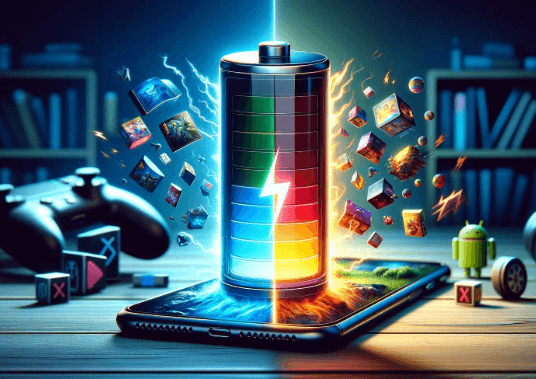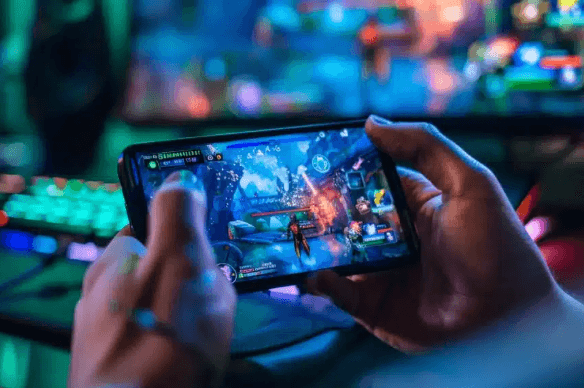Microtransactions in Gaming: A Double-Edged Sword

Microtransactions have become an integral part of the modern gaming landscape. They allow players to purchase in-game items, cosmetic upgrades, or even gameplay advantages, often for a relatively small price. At first glance, these small payments may seem like a simple and harmless way for players to enhance their experience. However, the rise of microtransactions has sparked a heated debate among players, developers, and industry experts alike.
On one hand, microtransactions provide developers with a steady revenue stream, enabling them to create better and more expansive games. On the other hand, they raise concerns about fairness, accessibility, and the overall direction of the gaming industry. Are microtransactions enhancing the gaming experience, or are they undermining it?
In this article, we will explore the rise of microtransactions in gaming, their impact on both players and developers, the ethical concerns they raise, and what the future holds for this controversial business model.
1. Introduction: The Rise of Microtransactions
What Are Microtransactions in Gaming?
Microtransactions are small, in-game purchases that allow players to buy virtual items or currency using real money. These transactions are typically priced relatively low, ranging from a few cents to a few dollars. They can be used to buy a variety of things, such as cosmetic skins, new characters, in-game currency, or items that speed up progress.
Microtransactions are especially prevalent in “free-to-play” games, where the game itself is free to download and play, but players are encouraged to spend money to enhance their experience. This business model is seen in many mobile games, PC games, and even large-scale console titles.
See also: Virtual Reality Gaming: Immersing Players in Digital Worlds
The Evolution of Microtransactions
Microtransactions have evolved from being small add-ons to becoming a major revenue model for many game developers. Initially, games offered expansions or downloadable content (DLC) for a fixed price. However, the shift towards microtransactions started in the early 2010s, as games transitioned to a free-to-play model or incorporated in-game purchases into their monetization strategy.
The introduction of games like FarmVille, Clash of Clans, and Candy Crush popularized the idea of offering free games with optional purchases. Over time, microtransactions have become ubiquitous, even appearing in full-priced games, much to the frustration of players.
2. The Different Types of Microtransactions
Cosmetic Microtransactions
Cosmetic microtransactions are the most widely accepted form of in-game purchases. These transactions offer items like character skins, costumes, or weapon skins that do not affect gameplay. The primary appeal of cosmetic items is that they allow players to personalize their gaming experience without giving them any competitive advantage.
Pay-to-Win Microtransactions
Pay-to-win (P2W) microtransactions, on the other hand, have received significant backlash. These transactions allow players to purchase items, power-ups, or upgrades that provide advantages in gameplay. This model can disrupt the balance of a game, as players who spend money may have an unfair advantage over those who don’t.
Subscription-based Microtransactions
Subscription-based microtransactions are becoming more common in games that offer continuous content updates. Players may pay for a monthly or yearly subscription to access premium features, exclusive items, or additional content. This model is often seen in games like World of Warcraft or Final Fantasy XIV, where the subscription fee provides ongoing content and service.
3. The Impact of Microtransactions on Game Design
How Microtransactions Affect Gameplay
The inclusion of microtransactions can fundamentally alter how a game is designed. Developers may focus on creating content that encourages spending, such as by introducing artificial barriers that can be bypassed with purchases. This has led to concerns that the true purpose of the game is being overshadowed by the drive for revenue.
In some cases, the presence of microtransactions can diminish the experience, particularly if players feel pressured to buy items in order to progress. The trend of “grinding” or repetitively performing tasks to unlock features can be seen as a tactic to get players to spend money, rather than rewarding skill or dedication.
The Shift Toward Free-to-Play Games
The introduction of microtransactions has led to a rise in free-to-play (F2P) games. In this model, developers rely on in-game purchases to generate revenue rather than charging players upfront for the game. While this makes games more accessible, it has also led to concerns about game quality and the excessive reliance on microtransactions to sustain gameplay.
4. Microtransactions and the Player Experience
Enhancing or Hindering the Player’s Journey?
Microtransactions have the potential to enhance a player’s journey by offering customization options or convenience features. However, when handled poorly, they can hinder the experience. Games that lock important content behind a paywall or offer significant gameplay advantages through microtransactions can alienate players who either can’t or choose not to spend money.
The Psychology Behind Microtransactions
Microtransactions often tap into psychological principles like FOMO (fear of missing out), creating a sense of urgency to purchase limited-time items. The randomness of loot boxes and other microtransaction-based rewards can also trigger players’ gambling instincts, leading to impulsive spending.
5. Ethical Concerns in Microtransactions
Gambling Mechanics and Loot Boxes
Loot boxes, a form of microtransaction where players purchase virtual crates with random rewards, have sparked widespread controversy. Many players and experts have likened loot boxes to gambling, as they rely on chance and can lead players to spend large amounts of money in search of rare or valuable items. The concern is particularly acute when loot boxes are implemented in games aimed at children.
Pay-to-Win: A Threat to Fair Competition?
The concept of pay-to-win (P2W) is one of the most controversial aspects of microtransactions. When players can purchase items or upgrades that give them an in-game advantage, it creates an uneven playing field. This undermines the competitive nature of games, as those who can afford to spend more money are at an advantage over those who cannot.
Microtransactions in Games for Children
Microtransactions in games that are aimed at children, such as mobile games or free-to-play titles like Fortnite, have raised serious concerns about exploitation. The ease of making in-game purchases and the marketing strategies targeting younger audiences can lead to overspending, sometimes without the player’s full understanding of what they are purchasing.
6. The Business Model Behind Microtransactions
Why Developers Choose Microtransactions
The main reason developers choose microtransactions is revenue. Games with microtransactions are more likely to generate ongoing income, ensuring that they can continue to be updated and supported. This is particularly true for free-to-play games, where microtransactions allow developers to sustain the game without relying solely on upfront purchases.
The Economics of Free-to-Play Games
Free-to-play games typically make money by offering optional in-game purchases. For developers, this model ensures that anyone can play the game, while offering a steady stream of income from players who choose to buy premium items, cosmetics, or other enhancements.
7. The Global Impact of Microtransactions
Microtransactions in Different Markets
Microtransactions have had a significant impact worldwide, with varying acceptance in different markets. For instance, in Western countries, there has been significant backlash against pay-to-win mechanics, while some Asian markets have embraced microtransactions as part of the gaming culture.
Regional Differences and Cultural Sensitivities
Cultural attitudes toward microtransactions can differ widely. In some countries, loot boxes and other forms of gambling mechanics are highly regulated, while in others, they are largely unregulated. Developers must consider these regional differences when designing microtransaction systems to avoid legal issues or alienating certain player bases.
8. Player Reactions to Microtransactions
The Backlash Against Microtransactions
Players have voiced their discontent with the rise of microtransactions, particularly those that disrupt gameplay. Many argue that microtransactions ruin the integrity of games, turning them from enjoyable experiences into cash grabs. Notable examples, such as the backlash against Star Wars: Battlefront II, have led to increased scrutiny of microtransaction practices.
The Growing Trend of Boycotts and Protests
As players become more vocal about their dissatisfaction with microtransactions, boycotts and protests have become more common. Fans have organized online movements to protest microtransactions in games, leading to changes in some developers’ policies and game designs.
9. The Legal Landscape of Microtransactions
Legislation Around Loot Boxes and Gambling
Countries around the world are grappling with how to regulate microtransactions, particularly loot boxes. Some countries, such as Belgium and the Netherlands, have taken a hard stance on loot boxes, declaring them a form of gambling and banning their inclusion in games. Others are still exploring how to regulate this area.
How Governments Are Addressing Microtransaction Issues
Governments are increasingly becoming involved in the regulation of microtransactions, particularly with regard to loot boxes and their resemblance to gambling. Some countries have implemented age restrictions, while others are calling for greater transparency from game developers.
10. The Role of Developers: Striking a Balance
How Developers Are Responding to Criticism
In response to growing criticism, some developers have made adjustments to their microtransaction systems. For example, they may offer clearer transparency regarding odds, ensure that microtransactions do not affect competitive balance, or create systems that allow players to earn rewards through gameplay without paying.
Games that Get Microtransactions Right
There are several games that have successfully implemented microtransactions without alienating players. Titles like Fortnite and League of Legends offer cosmetic items through microtransactions, allowing players to express themselves without disrupting the core gameplay.
11. The Future of Microtransactions in Gaming
Emerging Trends in Microtransactions
As the gaming industry continues to evolve, we can expect to see new trends in microtransactions. The rise of NFTs (non-fungible tokens), virtual currencies, and blockchain technology may lead to new models of monetization.
The Shift Toward Ethical Microtransactions
There is also a growing movement toward ethical microtransactions. Developers are increasingly seeking to balance profitability with fairness, offering optional purchases that enhance the experience without negatively impacting gameplay.
12. Case Studies: Success and Failures in Microtransactions
Fortnite: A Model for Success
Fortnite has been praised for its implementation of microtransactions, focusing on cosmetic purchases that do not affect gameplay. This model has been incredibly successful, generating billions of dollars while maintaining a strong, loyal player base.
Star Wars: Battlefront II: The Backlash Heard Around the World
On the flip side, Star Wars: Battlefront II is a cautionary tale of the dangers of microtransactions. The game’s original loot box system, which provided gameplay advantages, led to massive backlash from the gaming community and forced EA to make significant changes.
13. Microtransactions vs. Traditional Game Pricing
A Comparison of the Old and New Business Models
In traditional game pricing, players pay upfront for the game, and that’s the end of the transaction. With microtransactions, the game is often free-to-play, but players can spend money on items or content. Each model has its benefits and drawbacks, with microtransactions offering greater accessibility but raising concerns about fairness and accessibility.
14. Strategies for Players: Navigating Microtransactions
How to Make Informed Purchases
Players can navigate the world of microtransactions by being informed and setting spending limits. Avoiding impulse buys, reading reviews, and understanding the in-game economy can help players make smart decisions.
Avoiding Pitfalls and Staying Responsible
Being aware of the risks of overspending is key to navigating microtransactions responsibly. Players should avoid chasing “rare” items and focus on enjoying the game for its core experience, rather than becoming fixated on purchasing in-game items.
15. Conclusion: The Future of Microtransactions—A Double-Edged Sword
Microtransactions are undoubtedly a double-edged sword in the gaming industry. On one hand, they offer developers a way to sustain games with ongoing content and provide players with new ways to enhance their experience. On the other hand, they raise serious ethical and gameplay concerns, particularly when they disrupt balance or exploit vulnerable players.
As the gaming industry continues to evolve, it will be crucial for developers to find a balance between profit and fairness. The future of microtransactions will likely hinge on finding models that enhance the experience without compromising the integrity of the game.
Frequently Asked Questions (FAQs)
1. What are microtransactions in gaming?
Microtransactions are small, in-game purchases that allow players to buy virtual items or enhancements with real money.
2. How do microtransactions affect gameplay?
Microtransactions can affect gameplay by offering competitive advantages or cosmetic upgrades. When done poorly, they can disrupt game balance.
3. Are microtransactions ethical?
The ethics of microtransactions depend on how they are implemented. Cosmetic items are generally seen as acceptable, but pay-to-win mechanics and gambling-like loot boxes have raised significant ethical concerns.
4. What is pay-to-win (P2W)?
Pay-to-win refers to microtransactions that allow players to buy in-game advantages, such as powerful items or upgrades, giving them an unfair advantage over those who don’t spend money.
5. Are microtransactions in mobile games different from those in console games?
Microtransactions are more common in mobile games, often offering small purchases that allow players to progress faster. Console games are increasingly adopting microtransactions, but they tend to focus more on cosmetic items.
6. How can I avoid spending too much on microtransactions?
Set clear spending limits, avoid impulse purchases, and make sure you’re getting good value for your money before making a transaction.



